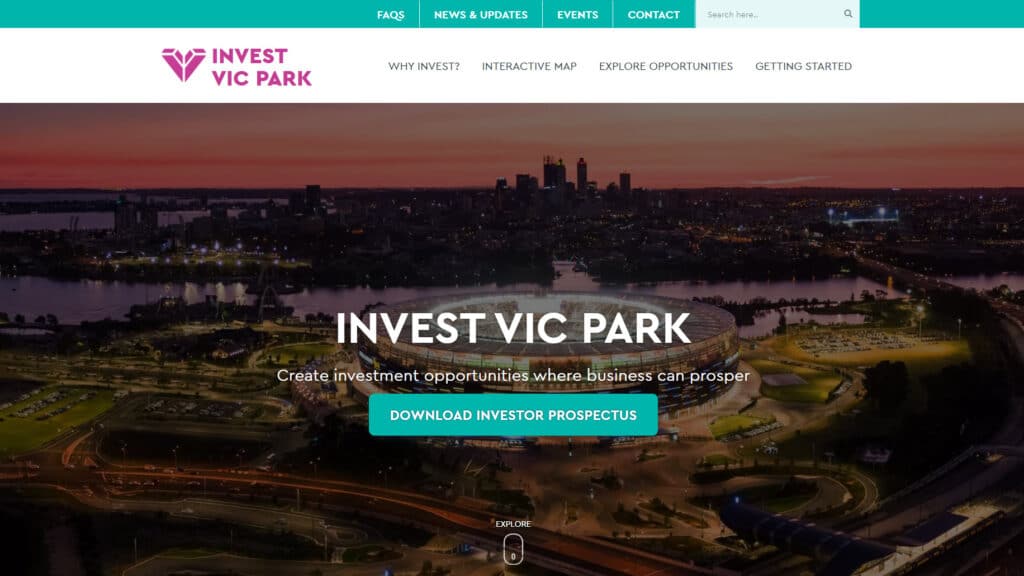Website Creation
Website creation is a four step process. The first step is always a Discovery Workshop, which allows us to take a deep dive into the needs of your business or organisation and figure out exactly what is required, what you like, and what your goals are. Following that, we create concept designs for key pages and review them together until you are delighted with them.
The most time consuming and intensive part of a website project is development – and we have a structured process to make sure that this phase of the project is completed on time and without significant delays or scope creep. We’ll meet with you via Zoom weekly to provide a status report and make sure you’re aware of any deliverables we need to keep things on track.
The final step of the website project is the fun bit – we help you work out a launch strategy that will maximise the return on your investment.
Information Architecture (IA)
Have you ever gone to a website with the goal of looking for a specific piece of information, only to give up in exasperation because you keep going in circles or can’t find the thing you know is there somewhere?
The answer is almost definitely yes, because information architecture (sometimes referred to as ‘IA’) is often an afterthought rather than a key principle that forms part of the website creation process. This is particularly problematic when you are a large organisation that has a whole lot of important information to convey, or if you have very complex or technical content to deliver.
At House Digital, every single website project begins with an information architecture workshop. Every. Single. One.
Why? Because we believe that the architecture of your website is the single most important thing in determining how usable it is for your visitors, and we are passionate about making the internet more user friendly.
We don’t just wing it either – the processes and scientific principles behind information architecture are well documented, and we’ve dedicated hundreds of hours of research to ensuring we execute website architecture for our clients using industry best practices. We are members of the Interaction Design Foundation and our workshop facilitator & founder Jo has delivered presentations internationally on both IA and UX.
User Experience (UX)
When we interact with a company, business, brand or organisation online, we develop emotions and attitudes about that experience based on our perception of utility, ease of use and efficiency of the human-computer interaction. This experience is based on both the product/system/service itself, as well as our own beliefs, experiences, perceptions and psychology. In short, three factors influence user experience – the user, the system, and the context of use.
What that means in the context of web design & development is that we can’t really understand the best solution until we put it in front of real users – because regardless of how well we think we know them, the only way to truly understand your users is through structured user testing & analysis of user data.
One of our core values at House Digital is a commitment to data-driven decision making. When we build a website, we encourage & facilitate extensive user testing to ensure that your website visitors have the best possible user experience. We can discuss options with you to best gather the information we need to create an optimum user experience, and we utilise a range of tools and techniques to ensure we are keeping UX top of mind throughout the design and development process (and beyond).
User Testing
In short, user-testing focuses on measuring the ability of something to meet the purpose it was designed for. In order to do that, you need to understand what your goals are in the first place, who your potential users are, and what they are looking to achieve when interacting with your website.
When we build a website at House Digital, we go through a detailed information architecture process to help you work out the best way to structure your content for the benefit of your users. But we don’t stop there – depending on the size and complexity of your project, we have a range of usability testing techniques that we facilitate & carry out to ensure that we test the effectiveness of the architecture and design before we spend hundreds of hours implementing it.
You might think you understand your website visitors better than anyone, but the only way to truly guarantee you meet their needs is to ask them what those needs are, and then test whether those needs are being met. To do that, we use best practice analytical tools and techniques developed by industry leaders.
Accessibility
Physical disabilities are simply the tip of the iceberg when it comes to the inclusive practice of web accessibility. The goal of web accessibility is to ensure there are no barriers that prevent interaction with, or access to, your website – providing equal access to information and functionality regardless of the user.
We are often asked why we’re so passionate about accessibility – but in our opinion a better question is why the rest of the world isn’t. We believe that information should be equally available to all users, regardless of physical or situational disability, bandwidth, internet speed, location, age or demographic. That’s why we’re committed to constantly improving the accessibility of our websites, and striving to take accessibility into consideration throughout the design and development process.
From a purely selfish perspective – you want users to be able to read content on your website regardless of whether they are colourblind (or standing in the sun looking at it on their phone). Adding alternative text to your images means that both sight-impaired users AND Google have some context about what your images show – which is great for those who rely on screen readers and for your SEO.
Making websites accessible to all doesn’t mean decreasing the usability for non-disabled users, if it’s done properly. When sites are correctly built and maintained, they become easier for everybody to use!
Integration & Automation
Integration and automation are so closely linked that we often use the terms interchangeably.
Whilst they are different, they often rely on and feed into each other with similar goals – to avoid replication of work that can be done by a computer so that you and your team can focus on what you do best.
The sanity of your team isn’t the only benefit to integration and automation though – when separate pieces of software don’t play well together, it can create ‘data silos’ that make things harder and harder to reconcile as the number of different systems and processes increase. The more data silos, the more difficult it becomes to integrate them into your workflows and the more reliant you become on things like data entry that are prone to human error (and really boring).
In short, you lose efficiency, productivity and opportunities when you do stuff manually that you should be automating.
House Digital was founded by a software developer and a process engineer. That means we take integration and automation pretty seriously!
We use a range of methods (including APIs, Webhooks and out-of-the-box integration solutions) to help our clients find the best way to integrate their website into their existing workflow. We also partner closely with our sister development agency Devhouse for custom cloud development solutions when required, and we often share development resources for complex projects.
From booking and event platforms to national databases and custom software, there isn’t much our team can’t handle!
Like what you see?
We’d love to have a chat and find out if we might be a good fit.


